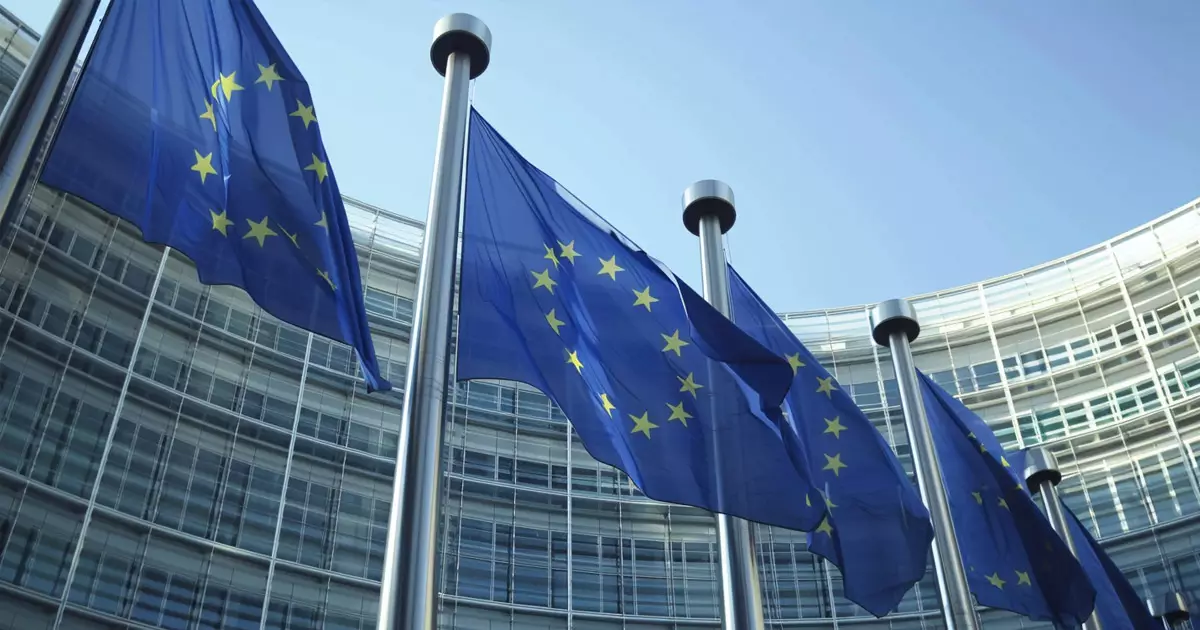Since its inception in 2020, the European Union’s Markets in Crypto-Assets (MiCA) regulation has emerged as a cornerstone of the continent’s approach to cryptocurrency governance. This regulatory framework marks an important pivot for Europe, challenging the narrative that it lags behind other regions such as the United States and Asia in crypto innovation. MiCA is not merely a set of rules but a transformative endeavor designed to catalyze the evolution of the European crypto landscape. It addresses critical issues within the industry while setting standards that may compel companies to elevate their offerings, benefiting consumers and investors alike.
As with any significant regulatory undertaking, the implementation of MiCA is not without obstacles. In recent developments, major exchanges such as Coinbase have announced intentions to delist stablecoins from unapproved providers, including high-profile assets like Tether (USDT), to comply with this regulation by 2024. Such moves underscore the urgency with which companies must adapt, as failure to comply poses risks not only to their operations but also to the perception of the crypto industry as a whole. Interestingly, Tether has signaled its intent to devise a “technology-based solution” to navigate these regulatory waters, hinting at an underlying transformational potential.
This tension between compliance and innovation is crucial for the crypto industry. Companies may face the daunting task of aligning their existing frameworks with MiCA’s rigorous requirements, yet this could ultimately encourage the development of more secure, efficient, and robust solutions. In the grand scheme, the pressure to comply might herald the dawn of a new, resilient crypto ecosystem in Europe.
MiCA’s genesis can be compared to the introduction of the General Data Protection Regulation (GDPR) in 2016, which revolutionized data protection and privacy standards across Europe. Like GDPR, MiCA aims to set global benchmarks, binding companies to stringent compliance standards or subjecting them to significant penalties. Initially met with skepticism, GDPR has become synonymous with data security and privacy—a position that MiCA aspires to replicate within the crypto sector.
The potential of MiCA to unify a previously fragmented regulatory environment cannot be understated. By establishing comprehensive compliance requirements for stablecoins and other crypto-assets, MiCA could bridge existing gaps in regulation across EU member states. This harmonization may ultimately lead to increased participation in cryptocurrencies by various sectors, enhancing overall market connectivity.
One of the standout features of MiCA is its insistence on transparency and consumer protection. It mandates clear disclosure of risks related to cryptocurrencies, targeting prevalent issues such as scams and market volatility. Furthermore, the regulation emphasizes sustainability by requiring crypto entities to report the environmental impact of their operations—an initiative that can potentially mitigate the industry’s historically poor reputation concerning ecological concerns.
For stablecoin issuers, adhering to MiCA means a total commitment to transparency regarding their reserves and financial stability. This shift addresses critical consumer concerns about trustworthiness and solvency that have plagued the stablecoin market. By demanding clarity and accountability, MiCA is fostering an environment where innovation can flourish alongside consumer protections.
The response from key industry players has been telling. Tether’s forthcoming “technology-driven approach” aims to enhance its products in response to MiCA’s mandates. Meanwhile, companies like Circle, which operates the USDC stablecoin, have proactively sought compliance by acquiring licenses from various jurisdictions within the EU. Such initiatives demonstrate the growing commitment among crypto firms to align with regulatory expectations.
In this landscape of increased regulatory oversight, we may witness the emergence of more traditional businesses within the crypto realm, facilitating further investment and advancement. MiCA’s requirements serve as a catalyst, spurring inventive responses from companies and ensuring that the crypto sector evolves to meet contemporary market demands.
The implications of MiCA extend far beyond the EU. Should it be successfully implemented, MiCA could offer a model for other regions grappling with the complexities of cryptocurrency regulation. As seen with GDPR’s influence on global data protection laws, MiCA may inspire similar frameworks in jurisdictions worldwide, contributing to a more uniformly regulated crypto environment.
As the full effects of MiCA are set to unfold by 2026, the stage is set for a more secure, effective, and sustainable crypto ecosystem. By emphasizing compliance and accountability, MiCA not only aims to protect consumers but also strives to promote the growth of the industry, fostering innovation in a more structured regulatory landscape.
MiCA stands as a bold assertion of Europe’s role in shaping the future of cryptocurrency regulation. As it unfolds, the regulation promises a new era of trust, transparency, and technological evolution that could transform the crypto market for years to come, sustaining its growth and facilitating broader acceptance among traditional industries.


Leave a Reply